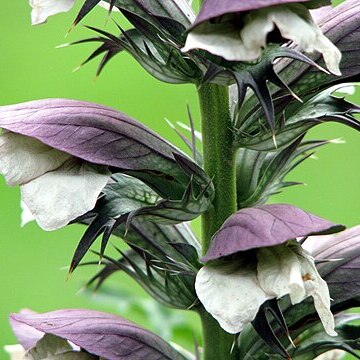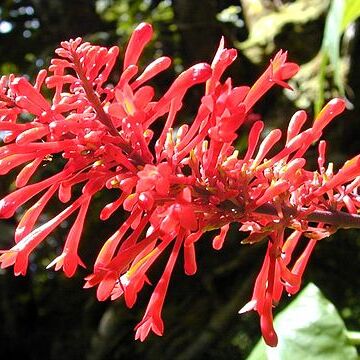Prostrate, erect, or rarely climbing herbs (annual or perennial), subshrubs, shrubs, or rarely small trees, usually with cystoliths (except in following Chinese genera: Acanthus, Blepharis, Nelsonia, Ophiorrhiziphyllon, Staurogyne, and Thunbergia), isophyllous (leaf pairs of equal size at each node) or anisophyllous (leaf pairs of unequal size at each node). Branches decussate, terete to angular in cross-section, nodes often swollen, sometimes spinose with spines derived from reduced leaves, bracts, and/or bracteoles. Stipules absent. Leaves opposite [rarely alternate or whorled]; leaf blade margin entire, sinuate, crenate, dentate, or rarely pinnatifid. Inflorescences terminal or axillary spikes, racemes, panicles, or dense clusters, rarely of solitary flowers; bracts 1 per flower or dichasial cluster, large and brightly colored or minute and green, sometimes becoming spinose; bracteoles present or rarely absent, usually 2 per flower. Flowers sessile or pedicellate, bisexual, zygomorphic to subactinomorphic. Calyx synsepalous (at least basally), usually 4-or 5-lobed, rarely (Thunbergia) reduced to an entire cupular ring or 10-20-lobed. Corolla sympetalous, sometimes resupinate 180º by twisting of corolla tube; tube cylindric or funnelform; limb subactinomorphic (i.e., subequally 5-lobed) or zygomorphic (either 2-lipped with upper lip subentire to 2-lobed and lower lip 3-lobed, or rarely 1-lipped with 3 lobes); lobes ascending or descending cochlear, quincuncial, contorted, or open in bud. Stamens epipetalous, included in or exserted from corolla tube, 2 or 4 and didynamous; filaments distinct, connate in pairs, or monadelphous basally via a sheath (Strobilanthes); anthers with 1 or 2 thecae; thecae parallel to perpendicular, equally inserted to superposed, spherical to linear, base muticous or spurred, usually longitudinally dehiscent; staminodes 0-3, consisting of minute projections or sterile filaments. Disk annular and nectar-producing at base of ovary. Ovary superior, 2-locular, placentation axile, with 2 to many ovules per locule; style filiform, simple; stigma funnel-shaped or 2-lobed (one lobe sometimes suppressed), one or both lobes sometimes recurved or recoiled. Fruit a loculicidal, stipitate or not, 2-valved, explosively dehiscent capsule [rarely drupaceous], 2-to many seeded, apex with or without a beak; septa remaining attached to or separating from inner wall of mature capsule. Seeds usually borne on hooklike retinacula (attached to septa of capsule), or retinacula lacking (Nelsonia, Ophiorrhiziphyllon, Staurogyne, Thunbergia), surface smooth or roughened, pubescent or lacking trichomes, sometimes with hygroscopic trichomes that expand when moistened.
More
Stamens 4, didynamous or 2, inserted on the corolla-tube and alternate with its lobes; filaments free amongst themselves or partially connate in pairs; anthers 2-celled or 1-celled by reduction, cells confluent or separated, sometimes one much smaller than the other, opening lengthwise
Capsule mostly elastically dehiscent from the apex downwards, the valves recurved and leaving the central axis
Calyx-segments or lobes 4 or 5, imbricate or valvate; rarely the calyx reduced to a ring
Recognised by the usually herbaceous habit, opposite leaves and the peculiar capsule
Corolla gamopetalous, 2-lipped or sometimes 1-lipped, lobes imbricate or contorted
Seeds mostly with indurated funicle; endosperm rarely present; embryo large
Flowers hermaphrodite, zygomorphic, often with conspicuous bracts
Leaves opposite, often with distinct cystoliths; stipules absent
Herbaceous or climbing, rarely somewhat shrubby
Ovary superior, sessile on the disk, 2-celled


